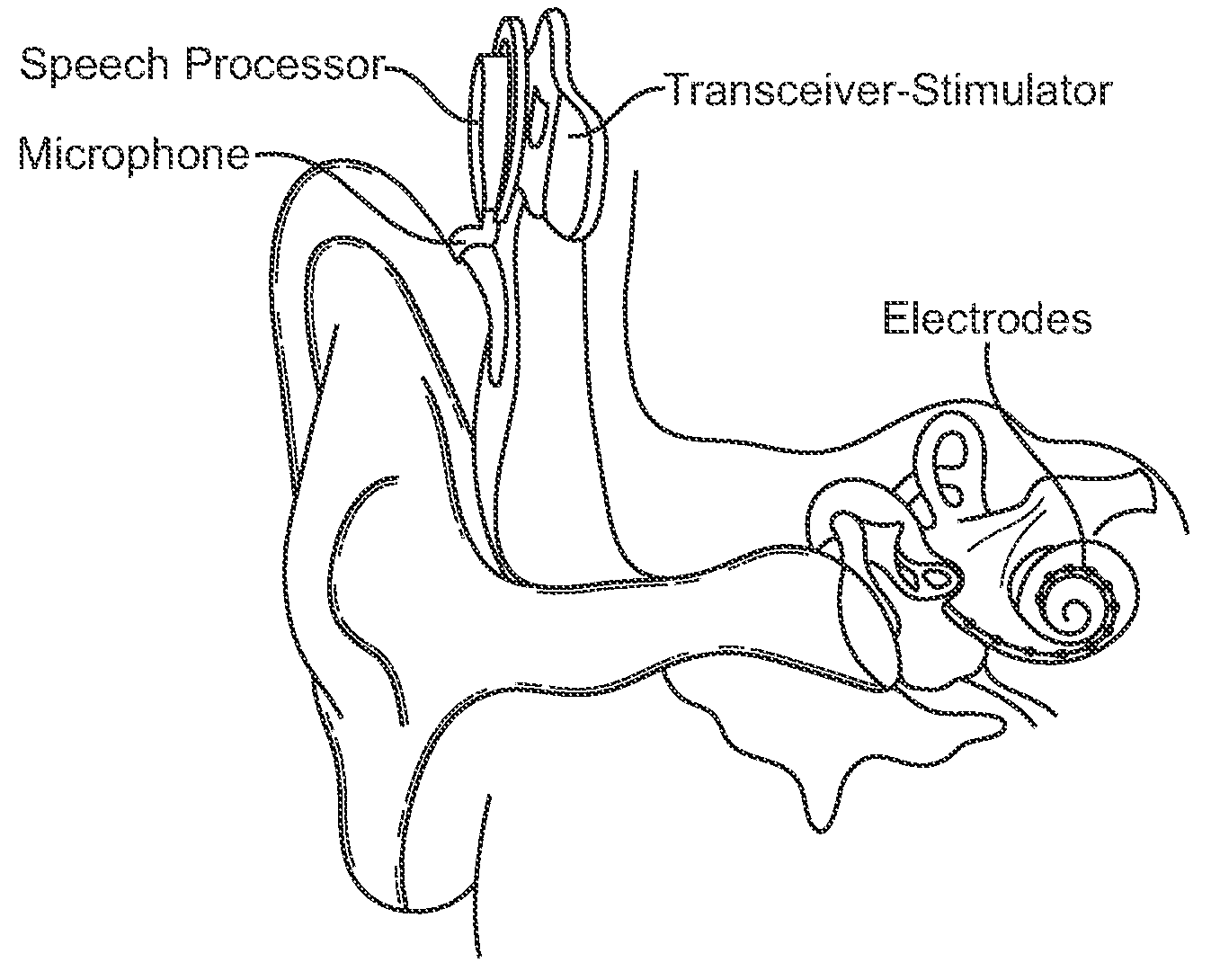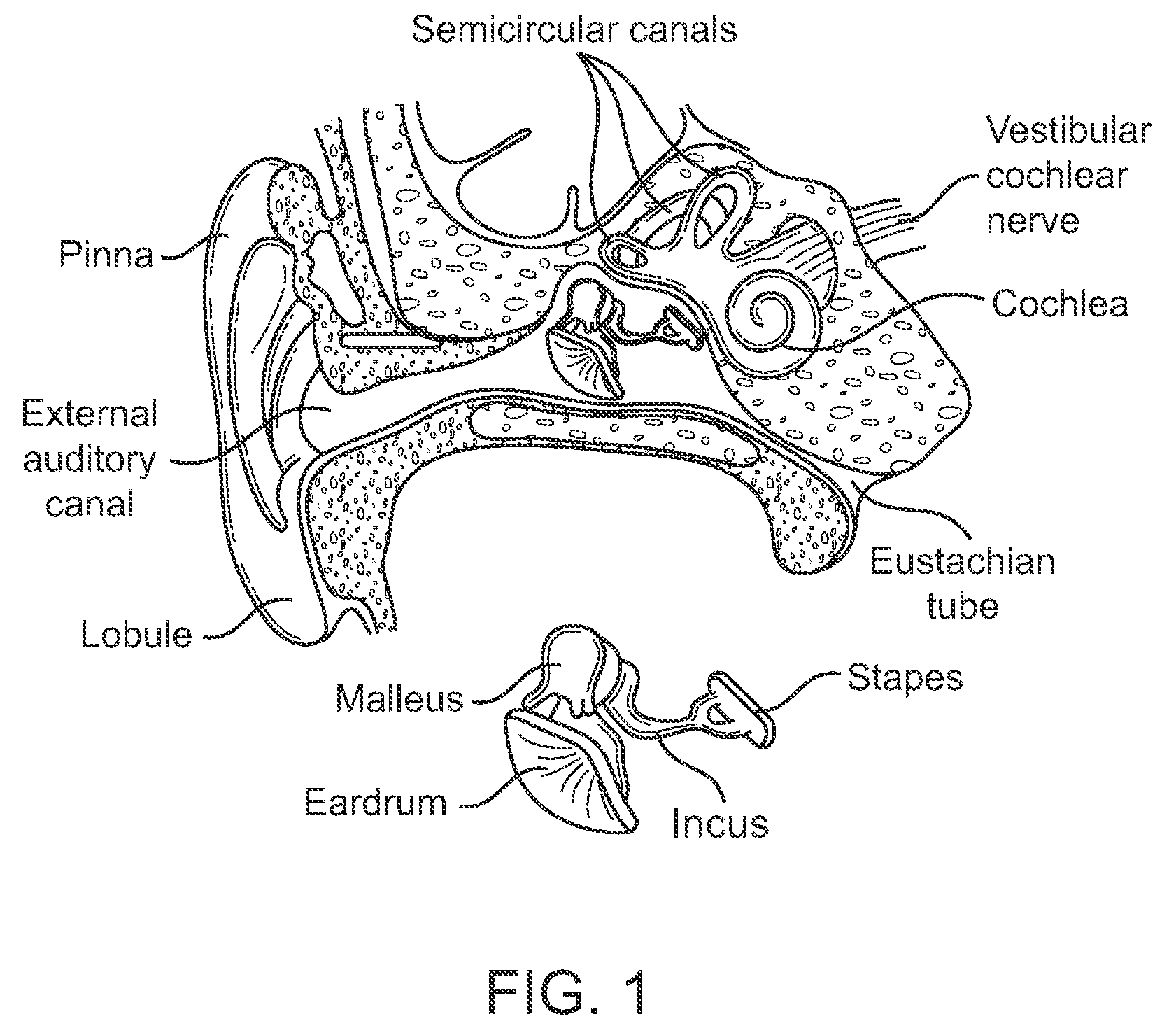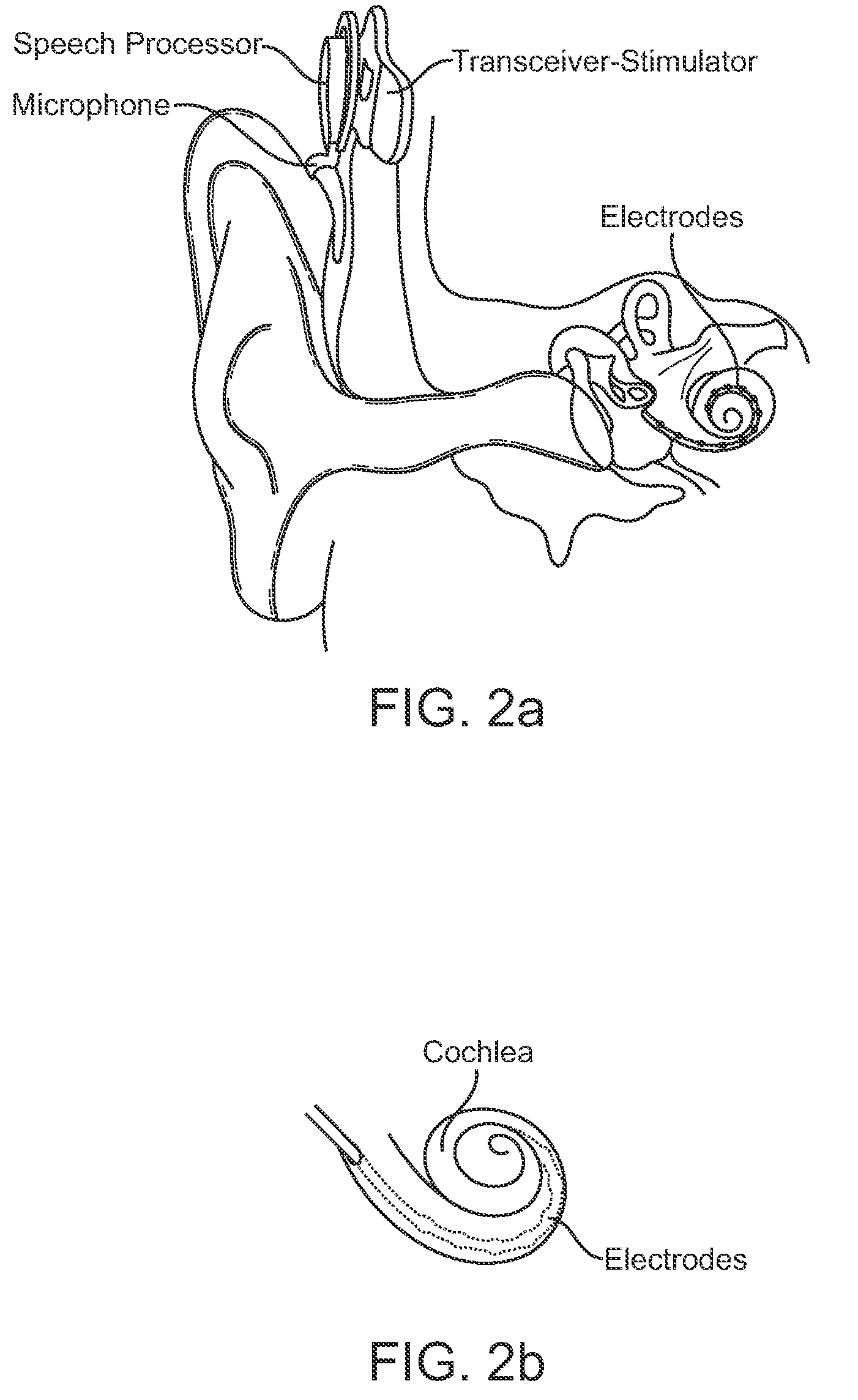Systems and methods for implantable leadless cochlear stimulation
a leadless cochlea and implantable technology, applied in the field of system and method of leadless cochlea implantable cochlea stimulation, can solve the problems of difficult cochlea application, not restoring or creating normal hearing of the cis device, and not amplifying sound like a hearing aid
- Summary
- Abstract
- Description
- Claims
- Application Information
AI Technical Summary
Benefits of technology
Problems solved by technology
Method used
Image
Examples
Embodiment Construction
[0025]The systems and devices described here comprise a controller-transmitter device that will deliver vibrational energy and information to one or more implanted receiver-stimulator device(s) that will convert the vibrational energy to electrical energy of a form that can be used to electrically stimulate cochlear nerves. The vibrational energy can be applied with ultrasound as a single burst or as multiple bursts or as a continuous wave with appropriate selection of the following parameters:
[0026]
ParameterValue RangeUltrasound frequency20 kHz-10 MHzBurst Length (#cycles)3-ContinuousStimulation Pulse0.1 μsec-ContinuousDurationDuty Cycle0-100%Mechanical Index≦1.9
[0027]The controller-transmitter device would contain one or more ultrasound transducers of appropriate size(s) and aperture(s) to generate sufficient acoustic power to achieve the desired stimulation at the location of an implanted receiver-stimulator device. Additionally, multiple implanted receiver-stimulator devices may...
PUM
 Login to View More
Login to View More Abstract
Description
Claims
Application Information
 Login to View More
Login to View More - R&D
- Intellectual Property
- Life Sciences
- Materials
- Tech Scout
- Unparalleled Data Quality
- Higher Quality Content
- 60% Fewer Hallucinations
Browse by: Latest US Patents, China's latest patents, Technical Efficacy Thesaurus, Application Domain, Technology Topic, Popular Technical Reports.
© 2025 PatSnap. All rights reserved.Legal|Privacy policy|Modern Slavery Act Transparency Statement|Sitemap|About US| Contact US: help@patsnap.com



